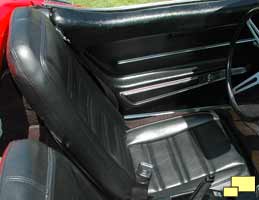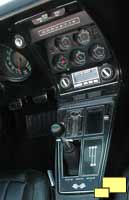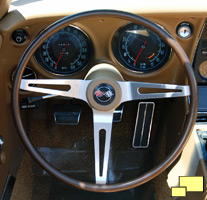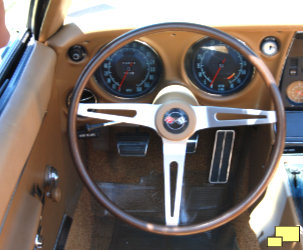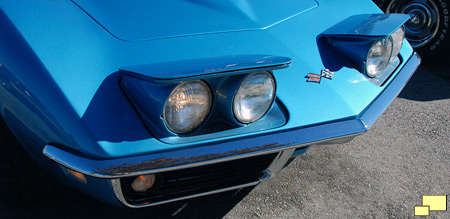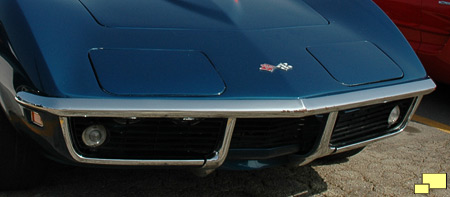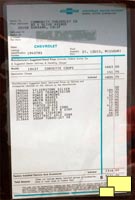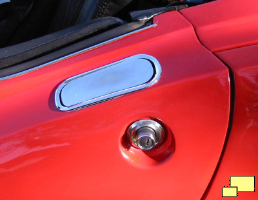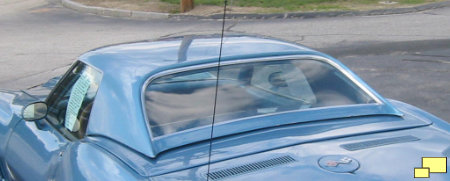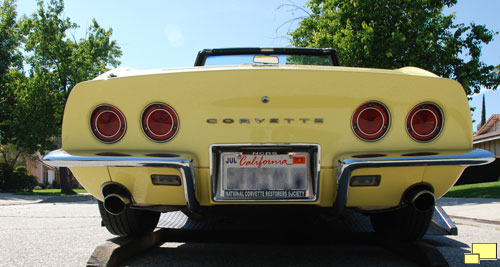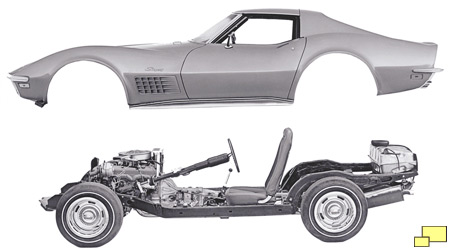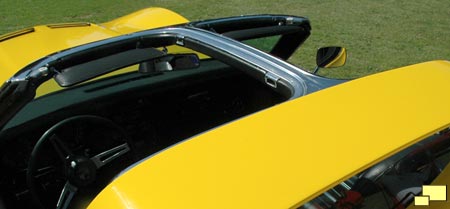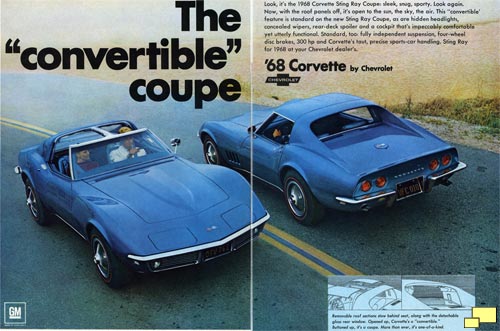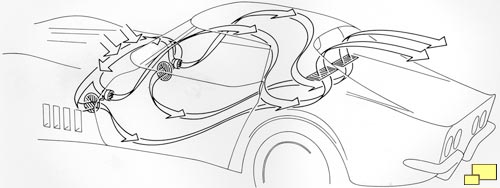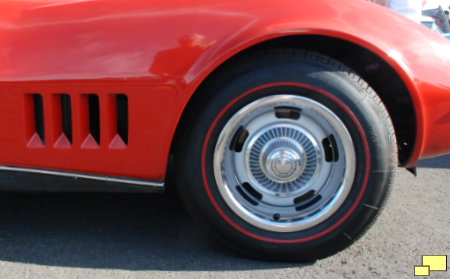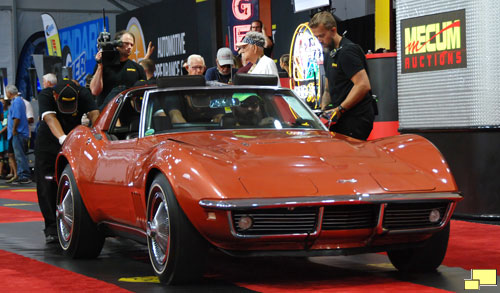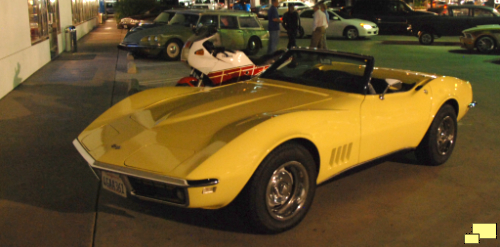Corvette Generations:
C1 C2 C3 C4 C5 C6 C7 C8
Corvette: Year by Year
1953 1954 1955 1956 1957 1958 1959 1960 1961 1962 19631964 1965 1966 1967 1968 1969 1970 1971 1972 1973 1974
1975 1976 1977 1978 1979 1980 1981 1982 1983 1984 1985
1986 1987 1988 1989 1990 1991 1992 1993 1994 1995 1996
1997 1998 1999 2000 2001 2002 2003 2004 2005 2006 2007
2008 2009 2010 2011 2012 2013 2014 2015 2016 2017 2018
2019 2020 2021 2022 2023 2024 2025
Quality and Design Problems
Plague the 1968 Corvette C3
With the introduction of the 1968 model, Chevrolet was greeted with something it had not heard with regards to the Corvette for a long time: criticism, much of it quite harsh. Although the new styling was well liked - and time has proven it to be a winner - it did require compromises.
The interior was hard hit by the critics, who marveled at how the Corvette managed to grow bigger in the exterior while at the same time shrinking the insides. To accommodate a lower roofline, the seats were angled at 33° vs. the 25° in the previous generation. Support and padding was also lacking as was the overall level of comfort. The other problem was the center console which was widened to accommodate a three speed automatic transmission. Making matters worse was the door panels which intruded into the passenger area.
There was also a sometimes perceived, sometimes reality based quality control problem. A long list of mostly nuisance items, many of which were corrected by hobbyist owners, were part of all 1968 Corvettes. Most of the issues, a lot of which were build quality related, were fixed in the 1969 and subsequent years. This reputation still plagues the '68s however, affecting their value. Defenders of the '68 respond that the concerns were overblown, making them attractively priced.
The steering wheel for the 1968 Corvette was mostly the same as the one fitted in the 1967 Corvette with the '68 wheel lacking the grain on the '67 wheel. Comfort was an issue however as it rubbed the legs of some drivers and the wide door panel would interfere with the drivers left hand. Right: Some 1968 owners solved the problem by installing 1969 and later steering wheels. 1969 and later Corvettes featured a thinner door panel which also alleviated the situation.
Above: As with the C2 Corvette, the new generation featured hidden headlights. Unlike the C2 however, the new design popped up rather than rotate. They were vacuum operated (C2s used an electric motor) and they were reliable and fast.
Another new for 1968 feature was hide-away windshield wipers. Like the headlights, they were vacuum operated and both aesthetic and aerodynamic advantages were the goal. Unlike the headlights however, their operation was not reliable. Other changes including locating the battery behind the driver which improved weight distribution and freed up some under hood space and deletion of side vent windows.
Right: The door release was thumb operated, an exclusive feature in the 1968 Corvette and an easy way to identify that model year. 1969 and later designs opened the door with the depression plate with a flush mounted keyhole in the same position as the thumb release.
As with the C1 and C2 generations, a hardtop was available. The desirable and attractive option (RPO C07, $231.75) was popular and could be found on 8,735 (30.58%) 1968 Corvettes. As with the C1 and C2 generations, it was possible to order a hardtop only Corvette - but that was a rare occurence.
1968 has the distinction of being the only C3 Corvette with four red tail lights. Other C3 model years incorporated the backup lights into the tail lights. 1968 backup lights were located below the bumper.
Above: The body style may have been all new, but the chassis was exactly the same as first introduced in 1963 and included the disc brakes originally installed in 1965. This was still a good thing as even five years later it offered great performance and excellent value for the era. The new body did allow for an increase of 1" of wheel width, so seven inch wheels were standard for 1968 only. Also unchanged was the engine selection, which was the same as 1967. Illustrated is a later (1970 to '72) body which included the egg crate front fender grill.
Below: Cutaway illustration from the 1968 Corvette brochure.
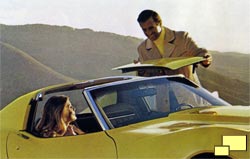 The Corvette had a tradition as an open car since the first examples exited the assembly line in 1953. The 1968 coupe featured a T-Top arrangement (right and below) which was an excellent compromise. The removable roof panels offered the best of both worlds: the security, weather sealing etc. of a fixed roof and the open motoring experience of a convertible. It would not be until 1999 with the introduction of the C5 hardtop that an exclusively fixed roof Corvette would be sold.
The Corvette had a tradition as an open car since the first examples exited the assembly line in 1953. The 1968 coupe featured a T-Top arrangement (right and below) which was an excellent compromise. The removable roof panels offered the best of both worlds: the security, weather sealing etc. of a fixed roof and the open motoring experience of a convertible. It would not be until 1999 with the introduction of the C5 hardtop that an exclusively fixed roof Corvette would be sold.
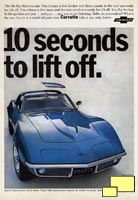 1968 Corvette print advertisements were proud of the dual function convertible / coupe advantages of the C3. Not mentioned was the security and safety advantages of the T-Top design. The "10 seconds to lift off" theme reflected the space race story that was popular at the time; one year later, a man would walk on the moon. The "Corvette Like a car only better" verbage is a bit much however . . .
1968 Corvette print advertisements were proud of the dual function convertible / coupe advantages of the C3. Not mentioned was the security and safety advantages of the T-Top design. The "10 seconds to lift off" theme reflected the space race story that was popular at the time; one year later, a man would walk on the moon. The "Corvette Like a car only better" verbage is a bit much however . . .
1968 Corvettes witnessed the demise of the side vent window. In its place GM incorporated Astro Ventilation. The white script below was found in the space on the passenger windows where the side vent windows were formerly located. Only non Air Conditioned cars were so equipped although all Corvettes up to ~ 1974 / 1975 featured the white "Astro Ventilation" script. The system could be found on other GM cars although its effectiveness was considered minimal according to some owners.
The standard wheel for the 1968 Corvette was the Rally wheel, similar to the wheel first available for the '67 Corvette. The 1968 wheel gained one inch width (six inch in 1967, seven inches in '68). The seven inch wheel was exclusive to the 1968 Corvette; subsequent C3 Corvettes were equipped with eight inch wheels.
This 1968 Chevrolet Corvette L89 Coupe sold for $129,250 at the Mecum Monterey auction on August 19, 2019. This is an excellent result as it occurred before the run up in Corvette prices which started in 2020. The car was superb, with only 5,300 miles, unrestored and is well documented with Bloomington Gold and NCRS awards. Color: Corvette Bronze with tobacco leather interior.
Check out the options page for the 1968 Corvette and you'll notice that 65% of the 1968s sold were convertibles. This compares with 43% for 1969 and 38% in 1970. This is not because convertibles were super popular for 1968. When the new generation 1968 C3 was introduced in 1967, only convertibles were available. What happened is that originally the coupe was to be a full targa style roof, similar to what was eventually used in the C4. The body style suffered from torsional stability problems - the roof could not be removed or installed unless the Corvette was on a flat surface. This meant that the first ~10,000 1968 Corvettes were all convertibles. A panicked effort resulted in the T-Top design and its' production started in January 1968. The situation was a problem for the convertible top supplier who was initially told that 60 units a day would work but then had to produce twice that. Compounding the situation was that if a customer liked and wanted the new body style of the C3, their only choice was the ragtop.




